Abdur Rahim Mohammad Forkan
Fellow, IEEE
An AI-based Solution for Enhancing Delivery of Digital Learning for Future Teachers
Nov 09, 2021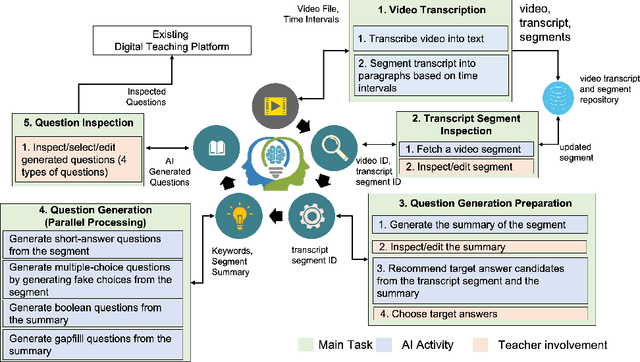


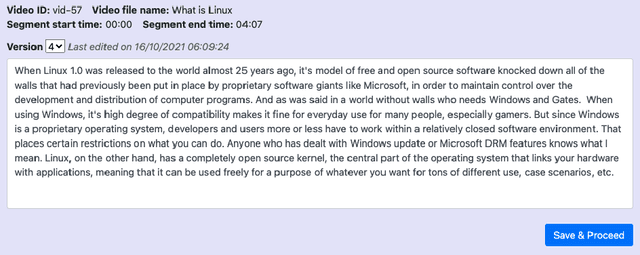
Abstract:There has been a recent and rapid shift to digital learning hastened by the pandemic but also influenced by ubiquitous availability of digital tools and platforms now, making digital learning ever more accessible. An integral and one of the most difficult part of scaling digital learning and teaching is to be able to assess learner's knowledge and competency. An educator can record a lecture or create digital content that can be delivered to thousands of learners but assessing learners is extremely time consuming. In the paper, we propose an Artificial Intelligence (AI)-based solution namely VidVersityQG for generating questions automatically from pre-recorded video lectures. The solution can automatically generate different types of assessment questions (including short answer, multiple choice, true/false and fill in the blank questions) based on contextual and semantic information inferred from the videos. The proposed solution takes a human-centred approach, wherein teachers are provided the ability to modify/edit any AI generated questions. This approach encourages trust and engagement of teachers in the use and implementation of AI in education. The AI-based solution was evaluated for its accuracy in generating questions by 7 experienced teaching professionals and 117 education videos from multiple domains provided to us by our industry partner VidVersity. VidVersityQG solution showed promising results in generating high-quality questions automatically from video thereby significantly reducing the time and effort for educators in manual question generation.
An IIoT machine model for achieving consistency in product quality in manufacturing plants
Sep 27, 2021



Abstract:Consistency in product quality is of critical importance in manufacturing. However, achieving a target product quality typically involves balancing a large number of manufacturing attributes. Existing manufacturing practices for dealing with such complexity are driven largely based on human knowledge and experience. The prevalence of manual intervention makes it difficult to perfect manufacturing practices, underscoring the need for a data-driven solution. In this paper, we present an Industrial Internet of Things (IIoT) machine model which enables effective monitoring and control of plant machinery so as to achieve consistency in product quality. We present algorithms that can provide product quality prediction during production, and provide recommendations for machine control. Subsequently, we perform an experimental evaluation of the proposed solution using real data captured from a food processing plant. We show that the proposed algorithms can be used to predict product quality with a high degree of accuracy, thereby enabling effective production monitoring and control.
CorrDetector: A Framework for Structural Corrosion Detection from Drone Images using Ensemble Deep Learning
Feb 09, 2021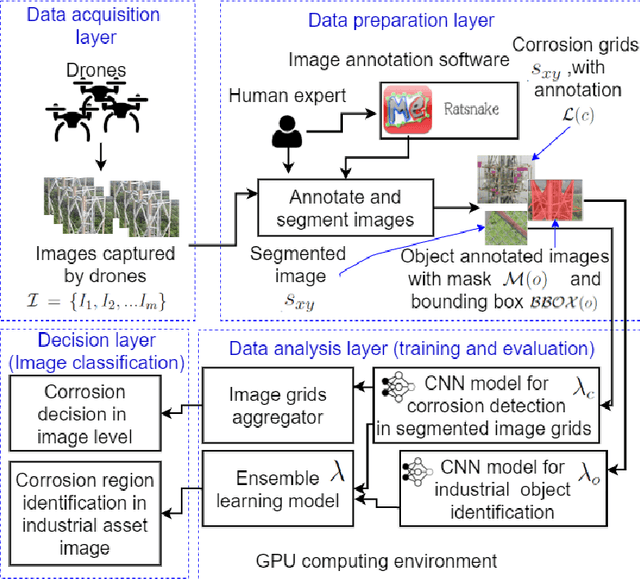
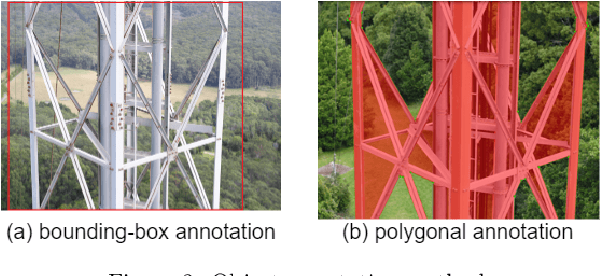
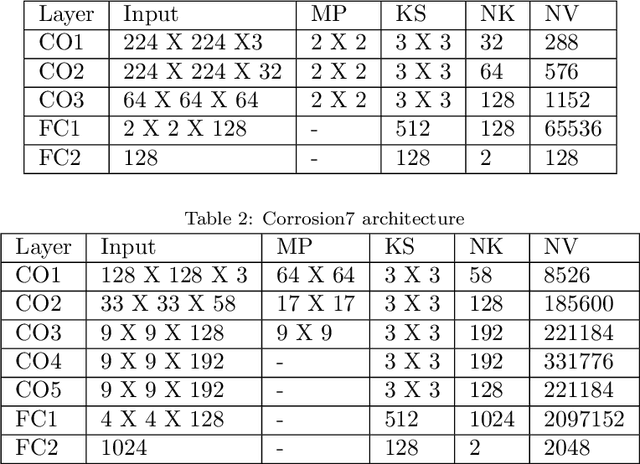
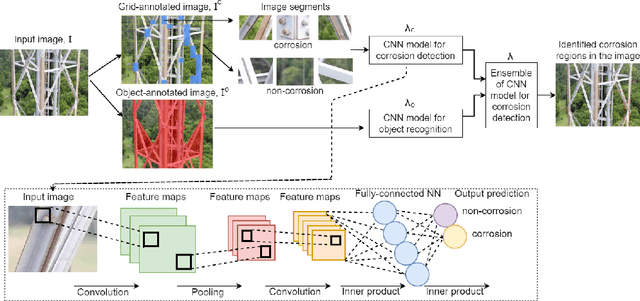
Abstract:In this paper, we propose a new technique that applies automated image analysis in the area of structural corrosion monitoring and demonstrate improved efficacy compared to existing approaches. Structural corrosion monitoring is the initial step of the risk-based maintenance philosophy and depends on an engineer's assessment regarding the risk of building failure balanced against the fiscal cost of maintenance. This introduces the opportunity for human error which is further complicated when restricted to assessment using drone captured images for those areas not reachable by humans due to many background noises. The importance of this problem has promoted an active research community aiming to support the engineer through the use of artificial intelligence (AI) image analysis for corrosion detection. In this paper, we advance this area of research with the development of a framework, CorrDetector. CorrDetector uses a novel ensemble deep learning approach underpinned by convolutional neural networks (CNNs) for structural identification and corrosion feature extraction. We provide an empirical evaluation using real-world images of a complicated structure (e.g. telecommunication tower) captured by drones, a typical scenario for engineers. Our study demonstrates that the ensemble approach of \model significantly outperforms the state-of-the-art in terms of classification accuracy.
ExpFinder: An Ensemble Expert Finding Model Integrating $N$-gram Vector Space Model and $μ$CO-HITS
Jan 18, 2021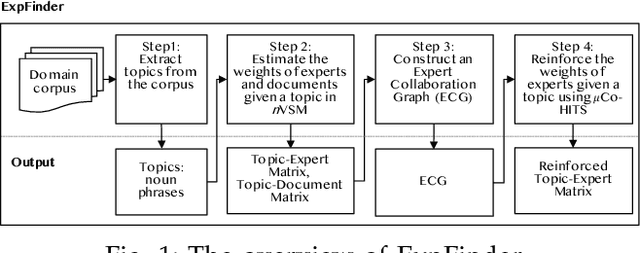
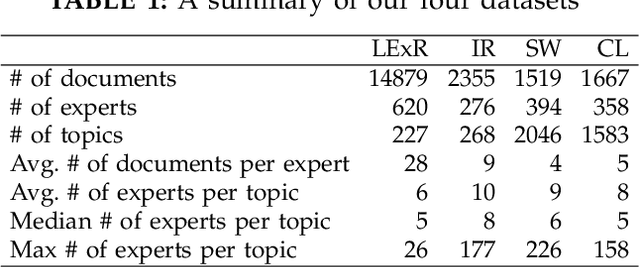
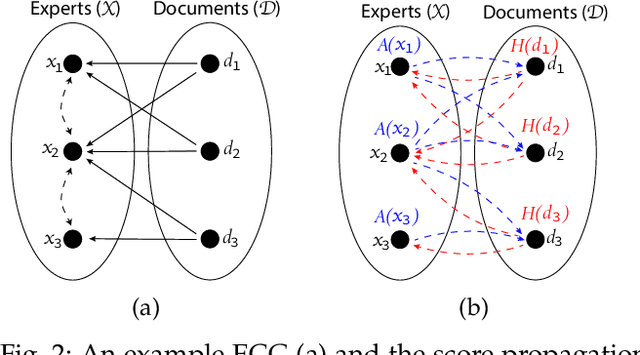

Abstract:Finding an expert plays a crucial role in driving successful collaborations and speeding up high-quality research development and innovations. However, the rapid growth of scientific publications and digital expertise data makes identifying the right experts a challenging problem. Existing approaches for finding experts given a topic can be categorised into information retrieval techniques based on vector space models, document language models, and graph-based models. In this paper, we propose $\textit{ExpFinder}$, a new ensemble model for expert finding, that integrates a novel $N$-gram vector space model, denoted as $n$VSM, and a graph-based model, denoted as $\textit{$\mu$CO-HITS}$, that is a proposed variation of the CO-HITS algorithm. The key of $n$VSM is to exploit recent inverse document frequency weighting method for $N$-gram words and $\textit{ExpFinder}$ incorporates $n$VSM into $\textit{$\mu$CO-HITS}$ to achieve expert finding. We comprehensively evaluate $\textit{ExpFinder}$ on four different datasets from the academic domains in comparison with six different expert finding models. The evaluation results show that $\textit{ExpFinder}$ is a highly effective model for expert finding, substantially outperforming all the compared models in 19% to 160.2%.
 Add to Chrome
Add to Chrome Add to Firefox
Add to Firefox Add to Edge
Add to Edge